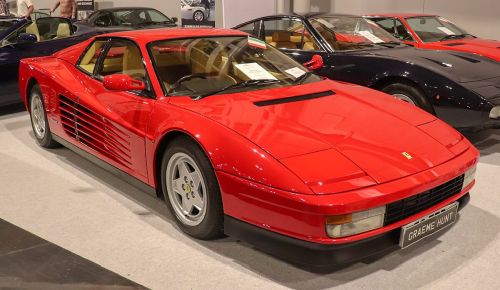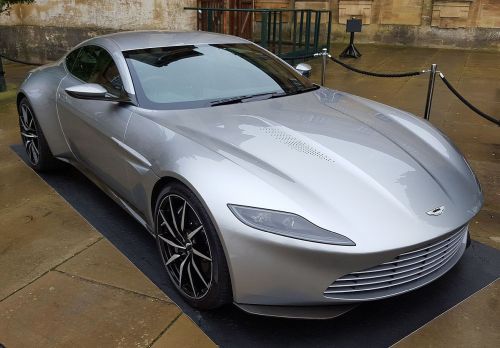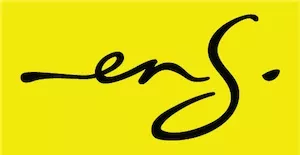- within Intellectual Property topic(s)
- in South America
- in South America
- in South America
- within International Law, Environment and Finance and Banking topic(s)
In this article, we discuss two recent trade mark decisions, both involving luxury car brands.
FERRARI TESTAROSSA – A case in the EU
The EU and German authorities had the opportunity to consider an iconic car, the FERRARI TESTAROSSA.

*Image credit: Wikimedia Commons
Back story
Ferrari used the trade mark TESTAROSSA for a racing car in the1950s. Much later, somewhere between1984 and 1996, Ferrari produced a TESTAROSSA production car. In total, only 7000 TESTAROSSA production cars were sold.
In 2023, Mr Kurt Hesse, filed non-use cancellation applications against several of Ferrari's TESTAROSSA EU trade mark registrations. The cancellation applications claimed that Ferrari had not used the TESTAROSSA trade mark in the EU.
Two of these cancellation applications were successful before the European Union Intellectual Property Office, which Ferrari went on to appeal to the General Court of the European Union - the decision in the appeal is currently pending.
Mr Hesse, a board member for a toy and model car company, filed German trade mark applications for the trade mark TESTA ROSSA in 2015. Ferrari opposed the registration of these applications and filed an invalidity application based on bad faith before the German Patent Court and Trade Mark Office.
As can be seen, Mr Hesse and Ferrari find themselves in a myriad of trade mark disputes across Europe.
The German Patent Court and Trade Mark Office made a number of findings when rejecting Ferrari's invalidity application, as well as their subsequent appeal of the rejection, that trade mark lawyers may find useful, which we discuss below:
The invalidity application centred around bad faith. A court will accept that there has been bad faith if there is clear and conclusive evidence that the applicant for registration of a trade mark filed a trade mark application with the intention of unfairly harming the commercial interests of third parties, rather than with the aim of participating in fair competition and obtaining a trade mark for its true inherent function, to indicate the origin of the applicant's goods.
Bad faith requires an assessment at the time the trade mark application is made, however, factors before and after the application date will be considered to imply the application's true intention at the time of the application.
The Court was not convinced that Mr. Hesse had acted in bad faith with the intent to impede Ferrari's business. Mere knowledge that a third party uses a trade mark is not enough for a finding of bad faith. The Court rejected Ferrari's arguments in this regard, outlined below:
No intention to use: The court found that there were no indications that Mr Hesse filed the trade mark applications as speculative trade marks, in other words, filed the applications without any intention of using them.
Multiple trade mark applications: The fact that Mr Hesse filed a number of different TESTA ROSSA trade mark applications in Germany and the EU for a broad range of goods and services did not mean that he was attempting to impede Ferrari's use of its TESTAROSSA trade marks.
Delay in using the trade mark: While Mr Hesse did not use the TESTA ROSSA trade marks himself, he licensed the trade marks to third parties to use. Case law of the Court of Justice of the EU ('CJEU') dictates that it is not necessary for a trade mark applicant to know at the time of filing a trade mark application the exact goods and services the trade mark will be used for. In addition, due to various legal disputes with Ferrari, Mr Hesse had a legitimate reason for the delay.
Delay in enforcing the trade mark: A factor against bad faith was that Mr Hesse had not yet enforced his trade marks against third parties.
Cancellation applications filed against Ferrari's EU TESTAROSSA trade mark registrations: The cancellation applications filed by Mr Hesse against Ferrari's EU TESTAROSSA trade mark registrations did not suggest bad faith on his behalf, but rather that he believed that the trade mark had not been used – the non-use cancellation applications, in any event, post-dated the filing of Hr Hesse's TESTA ROSSA trade mark applications.
That the contested trade mark may infringe Ferrari's trade mark rights: The Court deemed this irrelevant and not a bad faith consideration.
Reliance on previous case law: The Court deemed Ferrari's reliance on previous cases dealing with bad faith irrelevant and non-comparable.
In conclusion, the Court did not find an indication that Mr Hesse intended to use the TESTA ROSSA trade mark other than for indicating the commercial origin of his goods. Potentially intending to profit from the reputation of the TESTAROSSA trade mark does not amount to improper use.
ASTON MARTIN - a case in Taiwan
A recent trade mark case in Taiwan involved another luxury motor vehicle brand. A certain suave British spy was fond of this car brand- if you're wondering which one... the name's Bond... James Bond. And yes, the car brand is ASTON MARTIN.

*Image credit: Wikimedia Commons
Austin Marton
A party applied on 25 July 2023 to register the trade mark AUSTIN MARTON in Taiwan. The trade mark application covered goods in class 14 (which includes watches, jewellery and similar luxury goods), and proceeded to registration on 1 February 2024. Aston Martin Lagonda Limited, who owns the well-known ASTON MARTIN trade mark, opposed the registration of the trade mark relying on several grounds of the Taiwanese Trade Marks Act.
The Trade Marks Office in Taiwan ("TIPO") found in favour of Aston Martin based on Article 30.1.10 of the Trade Marks Act.
The law: Article 30.1.10 of the Trade Marks Act says that a trade mark will not be registered if it:
- is identical or similar to another party's earlier filed trade mark;
- covers similar goods or services as the earlier filed trade mark; and
- is likely to cause confusion amongst consumers with the earlier filed trade mark.
- Identical or similar trade marks: The contested trade mark, AUSTIN MARTON, is visually and verbally similar to the highly distinctive ASTON MARTIN trade mark– TIPO found the trade marks to be similar, as they both started with an "A" and ended with an "N" and both had a similar structural arrangement and letter sequence.
- Similar goods: There was an overlap of goods with one of Aston Martin's trade marks which was applied for in respect of similar goods.
- Distinctiveness: The ASTON MARTIN trade mark is highly distinctive. The relevant consumers would be far more familiar with the trade mark ASTON MARTIN than AUSTIN MARTON.
- Confusion: Given the similarity between the two trade marks and highly distinctive nature of Aston Martin's ASTON MARTIN trade mark, there was no doubt that consumer confusion would arise.
The AUSTIN MARTON trade mark registration was subsequently cancelled.
*Reviewed by Gaelyn Scott, Head of ENS' Intellectual Property Department
The content of this article is intended to provide a general guide to the subject matter. Specialist advice should be sought about your specific circumstances.


